#AAS218JetherG
Text
Blog # 8: Midsem CAR
Pertaining to the topic of assimilation and coming of age for Asian-Americans, I watched the films, Seoul Searching and Minding the Gap. The former held themes of assimilation, immigration, and rediscovery. Themes in the latter were of family values, the composition of a family, a generational divide, and on growing up. For the sake of length, I will primarily be discussing Seoul Searching because I only feasibly achieve more depth by analyzing one film.
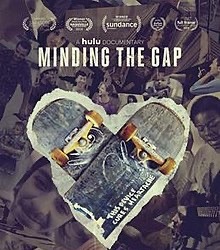
Minding the Gap is a coming of age story documenting the development of 3 main characters: Zack, Keire, and Bing. As they tread the river separating childhood from adulthood, they face the obstacles of responsibility, racial identity, and forgiveness, respectively. Though Bing is Asian-American, more is to be learned from Keire regarding Asian-American studies in that his storyline handles the duality of race-relations and juggling the American identity with being a person of color. As he said it, “because we have to deal with these issues, it just makes other things that like my white friends would complain about not even be a problem to me.” In other words, the world to a person of color is so distant from a white person in America that some of the problems of the latter are at the level of luxury to the former; They have first world problems, problems that even some people in America, like Asian-Americans, are unacquainted with. Likewise, though Zack is white, lessons on fatherhood can be learned from him. His quote, “I wanna give him every opportunity to help him succeed,” referring to his son Elliot, draws many parallels to immigrant families that made sacrifices for the greater opportunities abundant in America. It states a universal truth in parenthood and in doing so, rationalizes the actions of the waves of Asian-American migrants throughout history.
The exposition of Seoul Searching places the setting in the Korean Summer Camps of the 1980s, which was set in place for foreign-born teenagers so that they can learn about their roots. Seoul Searching more directly approached the themes of Asian-American identity, providing insight from the perspective of first-generation Americans then supplementing them with the depth of their parents’ backstories. Likewise, further parallels are drawn between these first-generation Koreans of different countries and backgrounds; For example, Klaus is Korean-German, Sergio is Korean-Mexican, and Kris is an adopted Korean-American. The story arc of each main character ultimately approaches the idea of what it means to be the child of foreign parents in a different country, looking into the idea of culture clashes and differing family values.
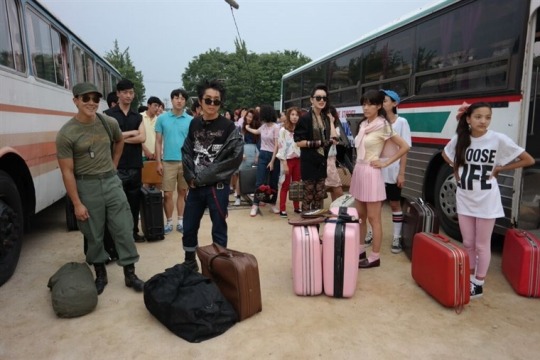
The characters were simplified for the sake of easier storytelling, but it does not take away from the substance of the plot and subplots. The storyline of Sid Park and Mr. Kim conveys an enlightening story on the cultural and generational gap in lieu of some simplification of their character. On the surface, Sid is a rebellious American teenager and Mr. Kim is a strict teacher who is always on his case. But when Sid is called into Mr. Kim’s office, Mr. Kim’s background is revealed- he was a prestigious tutor who drove his son to suicide after beating him unconscious the previous day for failing to get into Seoul National University. This juxtaposes Sid’s story, who feels he has parents that don't understand him and discipline him often. Sid says he hates his father and that he wants to kill himself without fully grasping the weight of such a notion the way Mr. Kim does. What this conveys about a difference in cultures between America and Korea extends beyond rebellion and education. Their story develops an understanding of how these two different cultures handle family matters and authority, with Mr. Kim representing the extreme end of the Korean half and Sid edging on the representation of the American half. Together, their stories share a social commentary on the complexities of a first-generation Korean-American [or any immigrant family, for that matter] from the perspectives of the parents whose roots are foreign and from the child, whose values are influenced by his differing surroundings.

Similarly, the story of Kris Schultz and Klaus Kim shares a story of assimilation, expectations, and rediscovery. Klaus is from Hamburg, but unlike many of his peers, he speaks Korean and has a grasp on his Korean roots. He intends not to go into the sausage manufacturing business like his parents, but rather to go to university for a more prestigious line of work to prove that immigrants are not a one-dimensional working class. His character is structured to be a near-perfect character, a foil to Kris. Kris was adopted in the United States and has little to no recollection of her birth mother. As such, she has been completely assimilated into American culture. Together, they help Kris find her mother. To her dismay, when Kris meets her mother, she finds out that she has a new family that has no knowledge of her existence and that her mother has no intention of them finding out. Only later do they discover that she was sent away from Korea for her safety because her biological father was abusive and neglectful. Kris is not at all like Klaus, but when her mother sees her for the first time she is incredibly happy. When she reveals that her family can’t know about Kris, she displays guilt, sorrow, and is more than willing to take the blame. The story and interactions between Kris and her mother is a story of love and hardship for foreign parents. It is very apparent that her mother is happy to see Kris and that she loves her- she made the sacrifice of sending her to the U.S., she did not convey any disappointment at their meeting, and she accepted full responsibility for Kris’s frustrations in her sadness. Kris and Klaus are contrasting developments of what first-generation children can become in the face of the sacrifices of their parents. The idea of “struggle for a better life for your kids” is expanded in these characters; The struggles of Klaus’s parents were immigration and establishment, whereas Kris’s mother faced total sacrifice and absolute loss. Furthermore, the latter half of the idea is manifested in multiple ways- the subjective perfection and success of Klaus and the happiness but detachment of Kris.
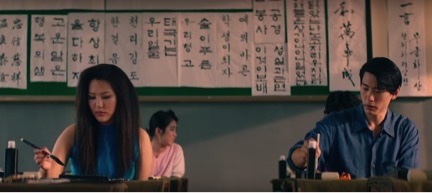
There are many more storylines, but the reflections that I take away are essentially insights on the motivations of deciding to face the difficulties of immigration and the cultural differences with an assimilated child, on top of the generational gap within families. Being a first-generation Asian-American myself, these films allow me different points of view for introspection as I perceive and handle the conflicts and the successes of my own family.
2 notes
·
View notes
Text
Blog 13: Trump and Pelosi on Asian Americans; Semester Wrap-Up
Regarding the exchange between Donald Trump and Nancy Pelosi, there isn’t much to say for those who are familiar with the facts pertaining to the current state of the United States and its politics. Trump vs. Pelosi: What happened in Chinatown by the Washington Post does an excellent job describing the statements that were made, their context, their subjects, and some attributes of the exposition.
As many know, Donald Trump has been diverting the blame of COVID19 onto China, Chinese people, and neglected any and all of his own shortcomings. Given his influence over the nation, this has led to dangerous repercussions on the Asian American Community. Recently, this manifested itself again as he attempted to slander Nancy Pelosi, his long-time political opponent, by condemning her visit to Chinatown. More specifically, he skewed the nature of her visit while describing it, saying that she promoted a “big parade” or “street party” there. Because he condemns her and her actions by denoting derogatory implications to these actions, which haven’t actually occurred, Donald Trump is implicitly ascribing a negative association to San Francisco’s Chinatown, and perhaps inadvertently, a negative association to the Asian American population, with emphasis on the Chinese.
While there is much to dissect in Donald Trump’s statements, including the way that “Pelosi’s parade” is a strawman fallacy to her actual intention of showing that Chinatown isn’t overtly dangerous, I will put emphasis on what this bodes for the American people, the subjects of the fallout of politics.
The Op-Ed, Op-Ed: John Cho: Coronavirus reminds Asian Americans like me that our belonging is condition, by the Los Angeles Times, acknowledges these developments in politics and social behaviour. Prior to COVID19, Asian American representation was on a clear rise, and with it, an increasing degree of social acceptance of Asians in the United States. Unfortunately, due to the words and actions of people such as Donald Trump, there is clear, significant regression. Hate-crimes against Asian Americans, many of which hesitantly classified as such, have been on a stark rise recently and open instances of racist remarks have been too.
Quite frankly, I tire of this topic. I grow weary with every analysis on the effects on Asians due to the fear and remarks of people about COVID19. What’s worse is the country’s attempt to cease the lockdown, negating the positives of what the quarantine has already done so far. To talk about the tragedy of the Asian American population in early 2020 is to beat a dead horse for people like me, well familiar with this side of the coin. As the majority of the United States is unaware of these hardships, I saw with hope that many Asian Americans have taken this into their own hands- gun sales have also shot up, with most customers being Asian-American. While conservative news outlets report this as panic-buying by preppers, which to some extent it is, they fail to acknowledge the legitimate reality and motivations of the new consumer- Asian Americans are aware of the new danger presented to them and are making precautions to defend themselves. Though a potentially violent and temporary fix, I feel that a temporary fix like this is enough to grant peace of mind for our vulnerable communities in this trying time.
This past semester has been a turbulent one with the conflicts of the coronavirus. In time, I hope that the racism subsides with the virus.
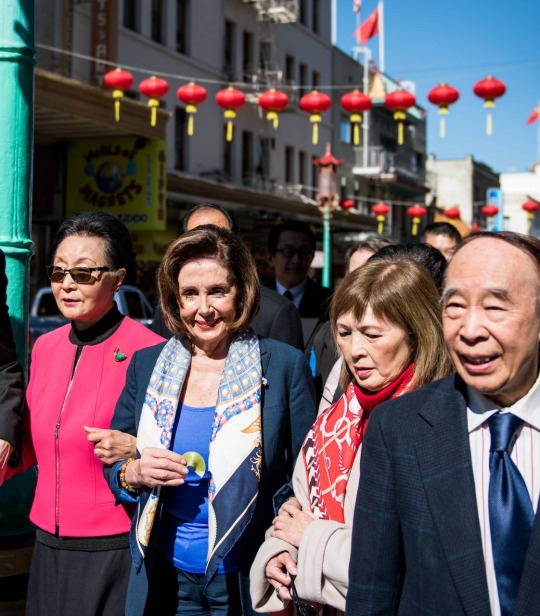
1 note
·
View note
Text
Blog 12: Chinese Cowboy, an American
Chinese cowboy.
We grasp the diversity of America:
America of rainbow people.
But is a Chinese transfer student an Asian-American?
University of Texas.
I have that fluent Texan Accent,
Texan pride,
Cowboy Attire,
I’m an apprentice cattle rancher.
I embraced the cowboy culture.
I ain’t pursuing an American stereotype.
In my youth I sat in awe at the cowboys on the screens.
I wanted to be like them.
I am them.
My American dream is on horseback with a big iron on my hip.
The American dream is as flexible as the composition of an American Person.
Suits and ties, saddles and lassoes.
American-born or not.
I assimilate into cowboy culture,
Texan culture,
American Culture.
I spent my first 18 years in China,
But I am an Asian American.
A Poem Based on the True Story of Bruce Wang
The experiences of Asian-Americans, and immigrants as a whole are as variable as the individuals in the population. No two American Dreams are identical and neither are any two sets of circumstances. Indeed, there have been many whose drive was an urgent and profound push factor, but for many others who have the fortune of choice, the same drawback to many others- assimilation- may be the pull factor. America has the capacity to be a wonderful country, and in many ways it is. Such wonder is vividly represented in the many people who came to America by choice, and not by necessity.

1 note
·
View note
Text
Blog 11: Claudia Kishi
Claudia Kishi of The Babysitter’s Club proved to be a positive influence and good role model for Asian American people in a time when Asian American representation was scarce and often negative. The character of Claudia Kishi is humanized in such a way that her portrayal is relatable and seen as cool by people of all types. More importantly, she is Japanese-American girl rather than a Japanese stereotype. As a result, the representation that she posed inspired a generation of teens in the 80s and 90s to be successful writers and artists, unabashed about their race.
It is important that we see Asian American characters like Claudia in popular culture, or all types of characters for that matter, because when one perceives a world that is homogenous in the screen, their views on the world around them and of themselves are skewed. An unrealistic world that calls itself “normal” onscreen will negatively impact what its viewers perceive as normal. As such, when people see characters like them being represented, the feeling of being an outcast fades away.
In the United States, Asian Americans are a minority, and oftentimes, young Asian-Americans find themselves to be one of few Asians in a place that looks more like the general American demographic. When these young and impressionable minds see people like themselves, a sort of self-embrace of racial identity takes place.
In modern times, negative Asian American portrayal still exists, but positive ones have increased greatly. To see people in media as more than their appearance and as more than a background character, to add depth to that character- it invigorates the significance of that character to people of a community who need representation; Real, human, representation. By humanizing Asian Americans and other people of color in the media, it normalizes their presence in society as much more than a novelty or as a one-dimensional cardboard cutout. In turn, the perception of these minorities in the real world are at least plagued a little less by ignorance because it solves one of the pervasive skews in the perception of minorities; Meaningful Asian American representation is a statement saying that they are just as human and just as capable as the rest of the majority white characters in media.
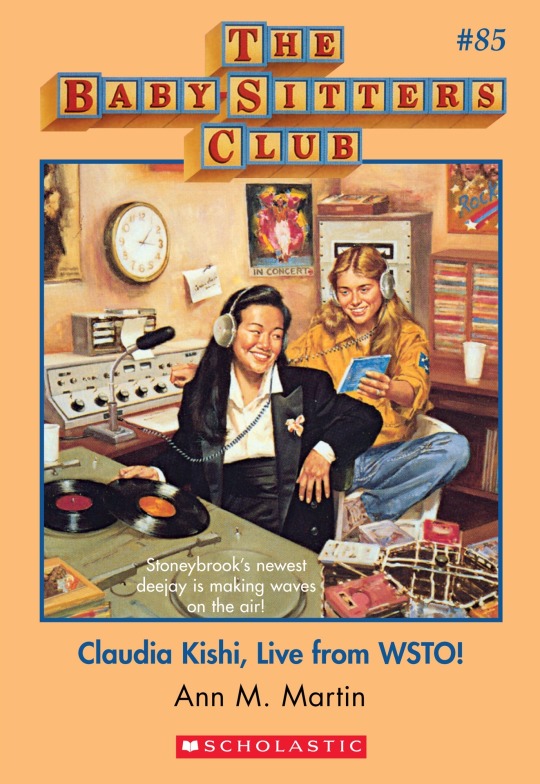
1 note
·
View note
Text
Blog 10: Hate Crimes and COVID
An argument against choosing to identify with one’s cultural background is that identity should stem from the individual. But in the face of a worrying spike in hate crimes, of which nearly 15% are violent, racial identity becomes significant, especially when a particular type of people are seen as the scapegoat for a far-reaching problem, the problem being Covid-19. Politically, the attribution of blame to Asians has clear motives in terms of the Trump presidency. Socially, this regression into flagrant racism is a reminder of how tightly insinuated racism and ignorance is in American history.
“He spent almost two months denying that the virus was a serious problem and falsely claiming that the number of cases was falling.” (Leonhardt 2020) There are two obvious motives for downplaying the gravity of the virus and in throwing a group of people under the bus as soon as it is perceived as the legitimate problem that it is. Regarding the former, Trump felt that a nationwide pandemic would hurt his chances of reelection. While that may have been true, his attempt to cover it up instead of handling the situation immediately will inadvertently cause the opposite. Unlike South Korea, which responded immediately and has a far lower number of cases per capita, the attempt to delay a response directly resulted in the deaths of many in Washington, a precursor to the spread throughout the rest of the United States. Furthermore, his refusal to take responsibility for his actions, and rather blaming it on the Asian-American community, heavily implied by his usage of the term “Chinese virus” causes further havoc in the United States. Recall, this is exactly what happened in post-World War I Germany with the Jews. While there may be some unity in the hatred of a community, as with the views on Middle-Eastern people post-9/11, this unity is ultimately self destructive regression, picking at the nicks in the diversity that makes our nation great.
Socially, we see history reiterate itself in its racist of conduct, to no surprise of many. Racism has been an issue since 1619 and racism against Asians in the US precedes even the first Asian Immigrants in 1898.
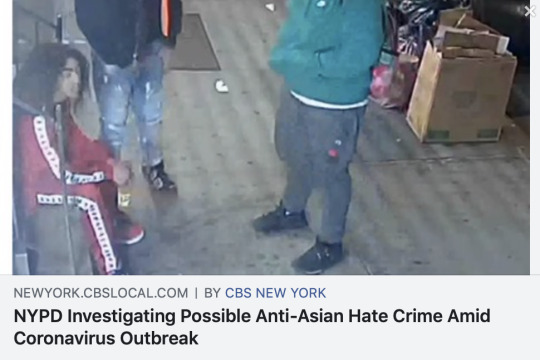
1 note
·
View note
Text
Blog 9: Value of the First Amendment for People of Color
For people who have suffered chronic discrimination and injustice the 1st amendment has proven to be of greatest value and utility. More specifically, the freedoms of speech, press, assembly, and petition has been vital. Without the 1st amendment, progressive action in the United States would have been almost impossible, evident in the abolitionist movement and its corollary in what followed.
Though Lincoln ended slavery in most states with the Emancipation Proclamation, the abolitionist movement in the US preceded him by many decades, with the Emancipator, an anti-slavery paper being available as early as 1819 (Mielnik 2010). The exercise of free press brought this topic to light throughout the United States, as well as to the government. Likewise, free speech and assembly allowed meetings for the abolitionist movement (PBS), with the Pennsylvania Abolition Society meeting as early as 1775. The assembly, discussion, and widespread attention of a topic is more important to its advancement than anything else; There is no workaround to it.
The value of the constitutional rights to the oppressed comes from its fundamental form, and not from its derivatives. The 13th, 14th, and 15th amendments were all brought to bring some equality to the freed slaves, but opposition came to fruition in the form of literacy tests and the Grandfather Clause, among many others. However, with discourse and national attention on the issue of segregation, greater change eventually came very successfully in the Civil Rights Movement in the 1940s through 60s.
Transitively, the progression that benefits the African-American population also applies to Asian Americans, who, especially at the time of the COVID-19 pandemic, face distinct prejudice as well.

1 note
·
View note
Text
Blog #1 : Jether Golimlim
Who dat boy? Who him is?
Ako si Jether Nathaniel Golimlim. My maternal grandmother’s father was a Spaniard, and her grandmother was Japanese. The rest of my family is Filipino. My parents are from Angeles City, Pampanga. I am a first-generation American, born in SF and raised in Daly City. A California Bay Area native, I proudly consider myself Filipino.
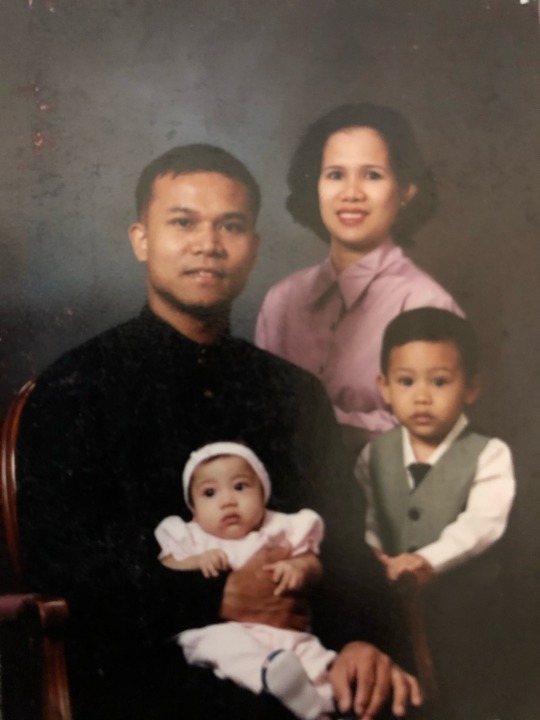
I have taken the Myers-Briggs test multiple times, and consistently find that I am an INTJ. I agree with those results. Perhaps tangentially related, in senior year of high school, I found out that I have asperger’s syndrome, and went to therapy to mitigate its effects. The fact that people can’t tell that I’m autistic unless I tell them so indicates that these attempts were successful, at least to a degree. Other traits of my personality are, obviously, evident in my interests. My favorite color is aubergine, which is a dark brown-tinted purple. My favorite number is 8, I have a musical preference for rock and metal (specifically, I’m into alt-rock, punk rock, heavy metal, symphonic metal and death metal), my favorite ice cream flavor is Lucuma, and my favorite drink is the cold brew fog from Peet’s coffee. I like to play pool and I am into finances. My credit score (as of the time of this post) is 704, I opened up a retirement account (ROTH IRA) at 18, opened up a stock portfolio on my 18th birthday, and am involved with churning (the practice of exploiting credit card bonuses for profit).


Born October 2001 in San Francisco, I am 18 years old this semester. I am a business major with a concentration in accounting, and a first-year sophomore because I have 25 college credits from high school. A hard lesson that life eventually taught me was that opportunity does not wait for the unprepared. One reflection of that revelation is my intention to graduate within 3 years, instead of the standard 4. By taking 18 units this semester and in Fall 2020, I can coast through the rest of university with 15 units per semester. I declined handsome scholarship opportunities from 3 different universities outside of California and 2 acceptances to UC’s because the thought of student debt legitimately scares me, and I decided against community college because with my credits, I would actually be wasting my time. Therefore, economically (considerations made with finances and the value of my time), San Francisco State University is the proper fit for me.


I generally measure my satisfaction with my choices by thinking of things in terms of how content I am with the outcome, but to say that I am content with being in San Francisco State is an understatement. I would have liked to dorm for the experience, but that decision would cost tens of thousands of dollars, plus interest. Despite that minor regret, I had no issue with finding a group of friends here to be with, and I feel that my balance between school, work, and personal life is manageable, if not optimal. I found good company with the regulars at Rack n Cue, the San Francisco State billiards hall, and I spend a considerable amount of time there. My school workload feels like 21 units [because I get no credits for my Biology 150 lab, which is almost entirely separate from the lecture], but thankfully, my job is willing to give me as few as 8 hours a week to focus on my studies. Likewise, pool has given me a healthy way to ease the mental burden of all the things I am handling at the moment.

My schedule is tight; I’m a busy person with plenty of goals. But I’m content, and I can proudly say that I look forward to waking up in the morning now, much more than I did before I was part of SFSU.
2 notes
·
View notes
Text
Blog #7: Vincent Chin
The case of Vincent Chin makes me feel frustrated. I audibly said “Fuck you” to the screen multiple times in response to the injustice that was administered to the individuals who killed him.
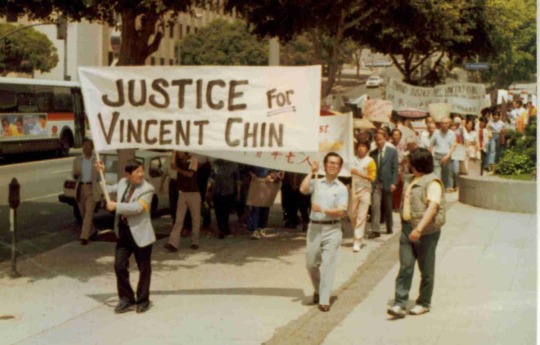
To begin, I’d like to say that I greatly appreciate the cinematography of the video. It began with exposition; The location is Detroit, in the declining economy in the 80s due to a trade war with the Japanese automobile industry. In the words of a person in the video, it’s “a war that only the Japanese have been shooting.” Of course, the implication of a statement worded in such a manner is that it bears heavy bias and negative sentiment against the Japanese as a whole. As an extension of this, the Asian community in Detroit has been harassed and attacked, which as another person mentioned, is a giant leap from simply holding that someone hates Japanese imports.
This contempt for Asians led to the “manslaughter” of Vincent Chin, the word manslaughter being in quotes because of the injustice of such a sentence; It was a homicide, and at least second-degree murder. Two men, Ebenz and Nitz, attacked Vincent Chin. Nitz held him down as Ebenz bludgeoned Chin with a baseball bat, cracking his skull open. Two police officers witnessed the case. These two men were prepared to go to prison for their actions, which further solidifies the understanding that this was an injustice, if not at the very least the overlooking of what is obviously malicious behavior. Rather than a 15-year prison sentence for second-degree murder, the two men got 3 years of probation and $3,000 fine. Chin’s mother wasn’t notified until it was too late and the two officers who witnessed the event weren’t summoned to testify. Judge Kaufman did not allow the development of the prosecuting case due to his conscious negligence and defended his sentence by saying that because Chin didn’t die immediately, it as a punishment rather than manslaughter, as if beating someone over the head with a bat isn’t grounds for attempted murder in and of itself.

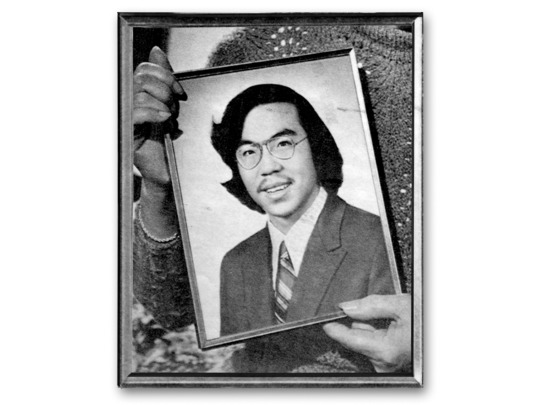
As much as I’d like to say that we’ve moved past this, I can’t reasonably say so. The case of Vincent Chin occurred in the 80s, and a 40-year gap in time is barely a generation and a half. In the 21st century we see police brutality and flagrant exercises of racism, especially now, where Asian Americans see violence and contempt for the Coronavirus, which like the economy in the 80s, they are not responsible for. The case of Vincent Chin makes my blood boil, but it is a necessary reminder that as progressive as America may seem, equality is still a facade, and it will be until enough time has passed to remove the unconscious biases and negativity from the American people. This is beyond evident in the closing of the video. In response to the comment on the light sentence of Ebenz and Nitz, someone replied, “Don’t be naive.” He’s not wrong. Don’t be naive to the perceptions of America, we still have a long way to go.
Below is the link to the video:
https://www.youtube.com/watch?v=C7BTzvJryjc
1 note
·
View note
Text
Blog #6: The International Hotel
As a Filipino, and especially as someone who grew up in and around San Francisco, the story of the International Hotel hits home. This is not simply because there is an immediate connection, distanced only by a time span of 50 years, but rather, it is a terrible reminder that the progressive Bay Area region hasn’t always been the inclusive place it is today. The development of Daly City, adjacently bordering San Francisco, hasn’t always had its concentrated Asian-American demographics; More specifically, it hadn’t always had a high population of Filipinos in North Daly City. This video calls to memory the background, to my knowledge, of the development of Daly City following the Second World War. After the infamous earthquake and fire of SF in 1906, people left San Francisco and populated Daly City, but only after World War II did the architect, Henry Doelger, develop the suburbs that compose the Westlake area of Daly City. This accommodated the tastes of the nuclear family- the exceedingly white nuclear family. By the standards of the time, the 1950s and 60s, the architecture was affordable, stylish, and modern. Up until the mid to late 90s, the demographics were majorly white, before a notable influx of Asian Americans, Filipinos especially.


The documentary highlights Manila Town, the 11-block stretch that preceded 21st century Daly City, now sometimes referred to as Little Manila for its demographics. The economics that cast out the inhabitants of Manila Town, and therefore the International Hotel, was an unfortunate inevitability that was poorly handled by the management of San Francisco. Naturally, the inference can be made that such poor handling may be attributed to racist sentiments, which is undeniably a legitimate possibility. This inevitability, of course, is the rapid development of an increasingly high-value city, with the cost of living and property invariably rising with it. Today, we see this juggernaut of an issue reemerging, more and more prominently with each voting season. Housing costs are rising too quickly, rent control is deteriorating the quality of housing, and gentrification sweeps much of the rest. Many people of lower-income have left, are struggling to stay, or are planning to leave in the future. This is already vividly evident in the population of Oakland, and the increasing homeless population in both SF and Oakland.


Effective solutions are in the works by the Bay Areas leaders, but I expect the high costs to keep on rising. In time, I foresee the demographics of SF to be overwhelmingly affluent by modern standards, and for the surrounding San Francisco Bay Area to expand further inland, beyond the bay. History tends to repeat itself and the patterns that resulted in the development of modern Daly City may occur once again, with another city just beyond its borders.
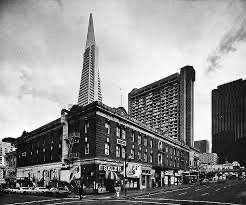

Here is the link to the documentary:
https://www.youtube.com/watch?v=tcsdglJFT0M
1 note
·
View note
Text
Blog #4: Managing Time and Energy and Facing Cognitive Bias- Meeting the Bar
I went to high school in an overwhelmingly Asian-majority city, and the student body reflected that. In my senior year, I only knew 2 black and 4 white students, 2 of these white students were biracial. I recall during each PSAT, SAT, and AP exam, our proctor would give a motivational speech about how our high school is a California distinguished school because our previous years have seen higher than average scores. My calculus teacher also loved repeating how our school would be well above the national average for the AP calc exam. Of what relevance is this to us? The performance of completely different individuals have no bearing on us, and even if we did have the same teachers, study habits will differ. But I always knew the implications to such motivational speeches, that is- the high school’s historically Asian-American demographics never failed to disappoint the stereotype that they were more intelligent, and our year of students would follow the exact same pattern. This positive stereotype threat was being insinuated for us and would go over many of our heads.

This stereotype demeans the personal achievement and hard work that comes with education and building upon intelligence, boiling it down to a race-related quality. I am personally affected by it because I fit this stereotype, having acquired 25 college credits from high school, 3 of those credits from a perfect score of 5 for AP Literature, an SAT score of 1410, among many others. In the face of such a stereotype, I would like to give advice based on how I, by personal experience, achieved a lot.
One of the biggest issues that I know of between people and the completion of their work is procrastination. The superficial solution is time management, but that is ineffective. Time management is easy. Energy management is the hard part, and therefore energy management is what needs attention. We can always set aside a few hours to do work but when those few hours come, we often spend it procrastinating or doing something totally unrelated and unproductive. For energy management, you need to know yourself- your patterns of energy, when something else may distract you, etc. For example, like many others, I get my bursts of creativity at night, when everyone else is asleep and when all distractions are inactive. Therefore, I take naps during the day so that I have the energy to stay up at night, without losing on hours spent sleeping. Some people are best in the morning, or still while in school. Whatever it may be, you need to play to your strengths and work whenever and wherever you work best.

Building upon this, it is important to get the full amount of sleep for your body, whether it be 6 hours or 9 hours, you must let your body adjust and establish a consistent circadian rhythm that works best with you. Of course, easier said than done; Putting away your phone at night or stopping homework to go to bed is a tough thing to do, so why do we do it? After we figure out how to manage our energy with the day, we can start managing time. Instead of plotting blocks in a schedule with indefinite beginnings and ends, have at least some precision with your time. Ballpark guesstimate how long certain things will take, and plan when you realistically think you’ll finish accordingly. To minimize wasted time, it helps a lot to do the easy tasks first so that the overall workload won’t be so daunting as you progress. Likewise, always put leisure in your schedule somewhere- humans aren’t work machines and psychological rest is as important as physical rest. Plan for that so that you won’t subconsciously cram it in your schedule before you sleep. With all these things in place, you should be able to get things done and be able to go to sleep fulfilled.


I follow this system, with a few nuances because I am very comfortable with my efficiency. When assigned schoolwork, I write it in a little notebook in a checklist, and I make a little notation on the margin: Q, M, L- quick, medium, and long. Sometimes there is O and P, optional and priority. What this does is it gives me a sense of how long or how urgent some tasks will be and lets me get organized without getting overwhelmed or limited by a time-based agenda. I am most productive at night so I sleep in a block schedule to get my full 8 to 9 hours while being awake at night; This consists of a 3-hour nap during the day (this is from 4 or 5 until 7 or 8) and 5 hours (12 or 1 am) of sleep at night. This is a near-impossible task for most other people, so I don’t expect people to do the same. I got this idea from a youtube video on polyphasic sleep in my freshman year and by consistency over the years, I adjusted my circadian rhythm to be comfortable with my weird sleep schedule. Before my nap, I do school or work-related tasks and social activities. After the nap, it’s dinner, my home workload, and leisure.

I understand that my methods are obscure and generally achievable, but this has worked for me with great, quantifiable success, and if my advice has not helped you, I at least hope that it inspires you to keep researching and experimenting until you find the perfect cycle for you.
1 note
·
View note
Text
Blog #3: Positive cognitive bias and model minority status- honorary whites and constructive blacks
This shall be prefaced with a short Asian American Studies lesson:
Little more than a few generations ago, the flagrant separation of people by binary racism existed in the United States. People were distinguished as either white or black. In many cases, the term “colored” was used, but these “people of color” were effectively constructive blacks- that is, people that weren’t black were institutionally discriminated against as if they were. Asian-Americans, however, were sometimes treated as honorary whites, a term developed in South Africa that meant people who were granted the rights and privileges of white people despite the fact that they would otherwise not have it. For example, in World War 2, the honorary white status was given to Japanese-Americans in training in the South (though, ironically, the same can’t be for Japanese-Americans who were sent to internment camps in the West Coast). This is because Asian Americans were model minorities. This is a term for minorities, best defined in the United States demographically as being educated, having financial stability, and a low crime rate. Before the 1970s, race and the population of the ghettos had a definitive overlap, and a person’s ability to move out the ghettos was pivotal to one’s life. A strong foundational example is Ashkenazi Jews. Model minority status is also given to Asian-Americans, in part due to the highly selective admissions at Angel Island. As such, Asian-Americans in the United States often had higher IQ scores and strong cultural values.

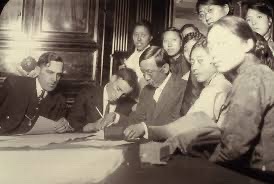

Of course, that didn’t stop discrimination against Asian-Americans, as race relations in news media and public policies, especially affirmative action, tended to boil it down to black and white people. Moreover, racial discrimination in Asian-American communities was ignored more so than in African-American communities, with larger amounts of incidents occurring to immigrants with limited English ability.
Though racism at the time of this writing (2020) isn’t blatant, it is very real, a flame stoked by the “justification” of COVID-19 and by the president’s approach to the situation. However, racism isn’t limited to blatant acts of disrespect; Many forms of racism exist in the subtleties of the categorization of people. As such, I’d like to address the “positive” stereotype of Asians and intelligence. The infamous slanted eyes and crooked teeth trope is widely outdated in the United States, but the stereotype of intelligence still holds today. As previously mentioned, the same qualities that made Asian-American model minorities in the past are the same qualities that continue to make them so in the present. I personally accept it as a compliment that I haven’t earned, but to many newer generations of Asian-Americans, it sets a high bar that we often feel that we have to meet. In turn, it becomes a bar that many strive to meet due to the influence of older generations that reinforce these strict cultural values, which were oftentimes the same values that allowed their entry into the United States. I.e. immigrants often met harsh criteria to gain entry in the United States, and in turn, their offspring would meet these same criteria due to the pressure of their parents, rather than the government. These children would then influence others long after the restrictions set in place by the government, such as the Immigration and Nationality Act of 1965, indirectly prolonging the effects of such government measures.

For Asian-Americans like me, and for my generation as a whole, what this bodes is a bar that many feel a pressure to meet, a pressure that many end up meeting. While the optimistic view is “what harm is it to be more educated?,” the flip side is that there is a subset of people who are perceived as different from the [white] American majority, and this difference in education is an addition to the argument that it exists. Attributing intelligence to their race rather than their individual capabilities deprives these people of credit where it’s due.
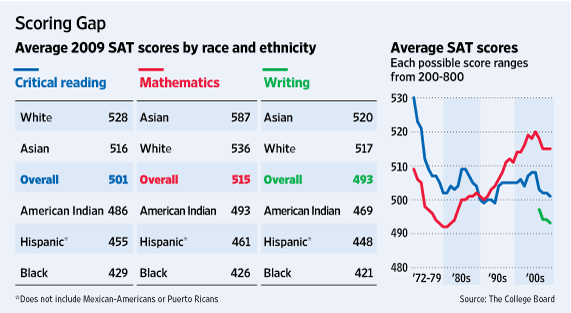
However, with increasing Asian-American representation in the media, the portrayal of Asian-Americans being just as American as everyone else, as it should be, conveys the idea that intelligence is not inherent. Ultimately, there is an optimistic view to see in this- this bias, albeit a “positive” cognitive bias, may fade away along with the perceptions that there is a massive divide between white America and its minority groups.
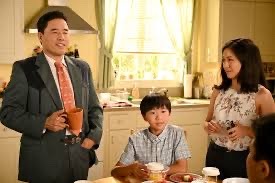
1 note
·
View note
Text
Blog #2: Filipinos and the Impact of Efren Reyes on Billiards in America
When I was still starting out in pool, one short exchange has always stuck with me in the back of my mind, and it went something like this:
“Who’s the new guy?”
“He’s Filipino, he has to be good”
Though I don’t consider myself nearly skillful enough to uphold that positive stereotype, I like the thought of such an idea being applied to me, even if it is racist to some degree.
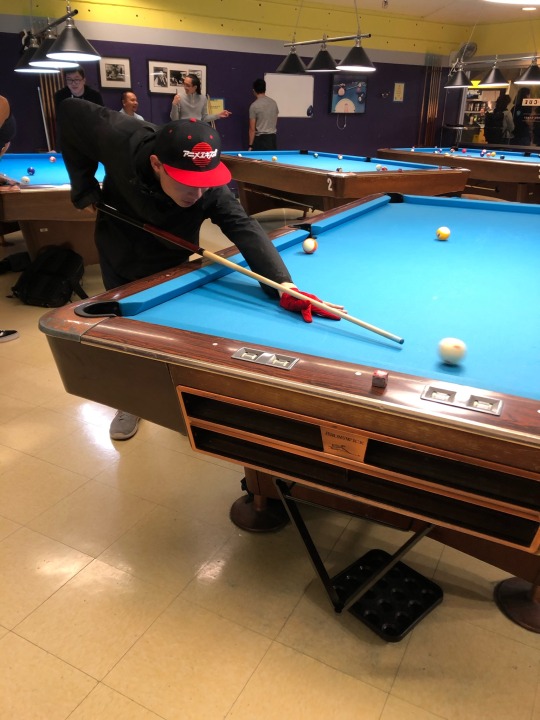
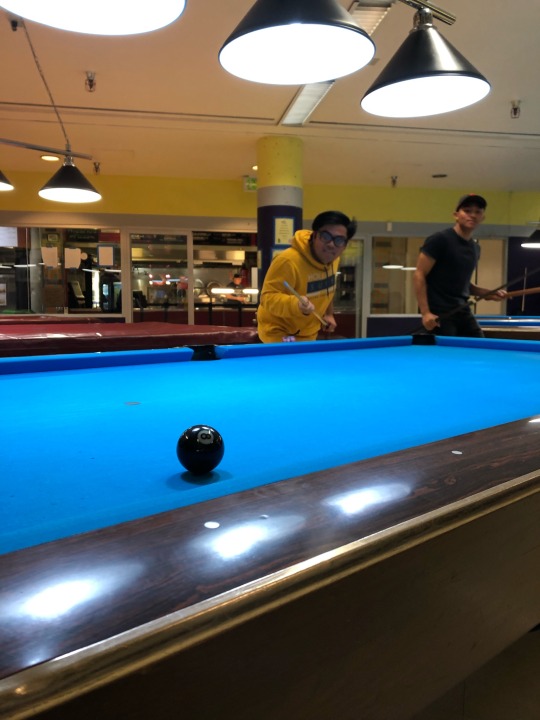
This stereotype takes root in Efren “Bata'' Reyes, nicknamed for the Filipino word meaning “child,” given that he’s been playing and hustling in the game of billiards from a very young age. As he grew, he became a legend in the Philippines and word of a dangerous player named Efren Reyes spread in America, but that’s all they knew; They didn’t know his face. When Efren eventually came over to America to hustle in the 1980s, he went under an alias to hide his identity. Not very long after, he was discovered due to his ability. His American nickname came to be the “Magician,” for his exceeding skill that seemed much like magic. Having won more than 70 international championships, the Derby City Classic championship 14 times, and the World Pool League championship twice, the numbers sure speak for themselves. Efren Reyes is universally regarded as The Best at pool, though by modern standards, such a statement may be left of center due to his inexperience with jump shots. Efren’s thorough, and seemingly intuitive, understanding of stroke, angle, and cue spin is far beyond the likes of anyone who preceded him, and I dare say the likes of anyone after him too. In the world of pool, Efren Reyes, through his profound skill, effectively put the Philippines on the map. Thanks to him, the sport, already popular there, grew even more. Likewise, he inspired newer generations of Filipino players who crossed the Pacific and, too, grew to become among the world’s top contenders.
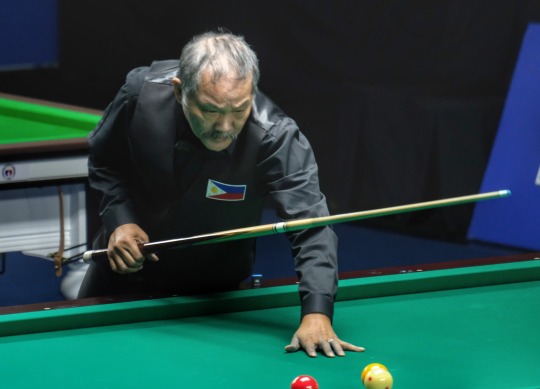
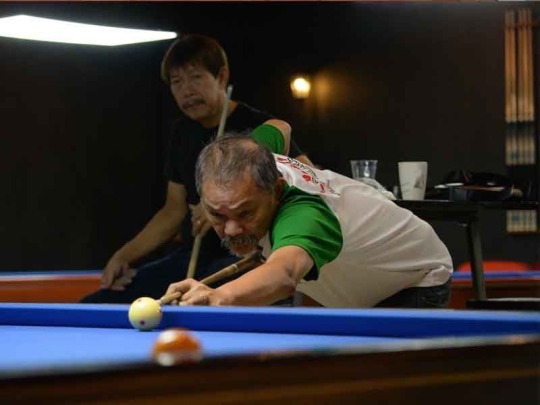
Getting into pool, I had no idea how intertwined my Filipino background was to the game of pool. All I knew was that when I first ran racks in pool, in the first week of college, I was instantly captured. My first semester, I came in almost daily, and since then, I grew to become acquainted with most, if not all, of the regulars at the SFState pool hall, Rack N Cue. Not long after, I went down the rabbit hole, learning from more senior players of all ages and looking into tutorials online. More interestingly, I came to find out that my own family is more tied to the game than I initially thought. Before they immigrated to the US, many of my family members played the game as well. My dad, at the same young age when he was courting my mom, played pool often and so did my uncle, who would skip classes to play. My grandmother, uncles, and aunts tell stories of how my grandfather would play pool against people who, after running out of money, would lose their shoes. Such gambles, I suppose, are why my family chose to move past the game after my sister and I came about, only opening up about it after I introduced my independent fascination with it. But then again, they sure do love to gamble with cards on a family-scale game of Tong Its.
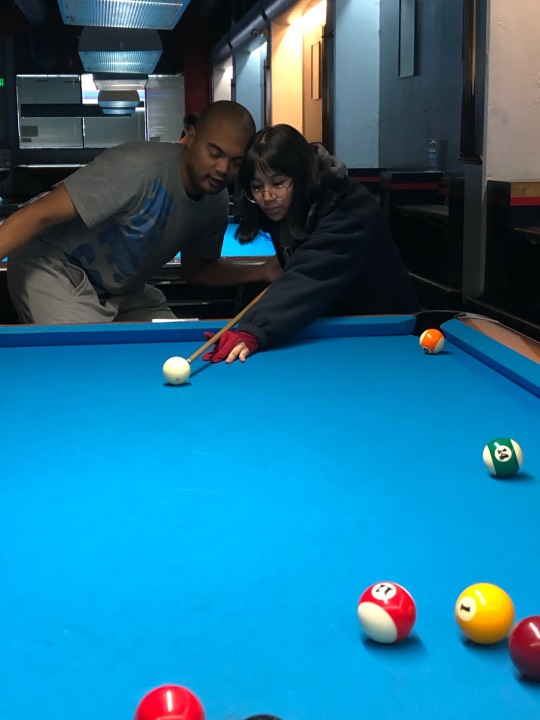
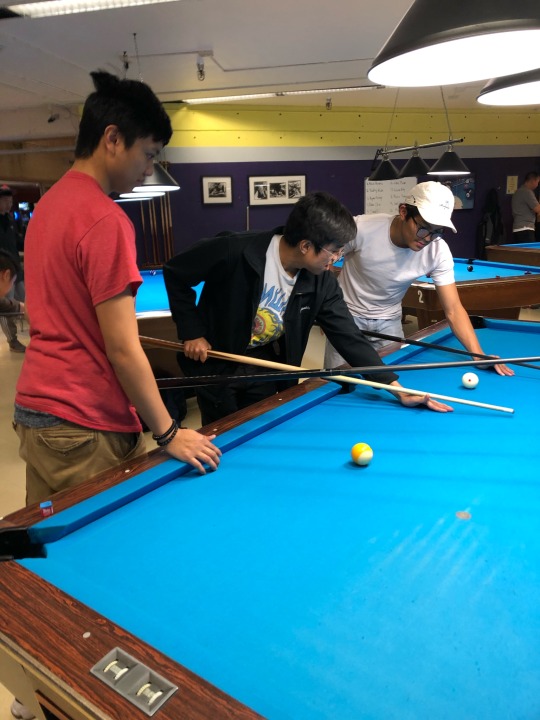

Ultimately, I’m glad to have found a sport that I am truly captivated by and that my family supports.
1 note
·
View note
Text
Blog #5 Iron Chef
The nation that we were tasked with representing was Japan. Immediately after the project was assigned, the 9Eigths group began brainstorming ideas for the dish. On February 27th, we were given an opportunity to go out and do some field research. Such an opportunity was not wasted, as we went to Tani’s Kitchen in Westlake. In sampling a vast array of food, we explored different routes with which we could approach fusing Japanese and American cuisines while still being able to represent Japanese-Americans in a meaningful way.



After much deliberation, we resolved on California Camp Donburi, a reflection on the Japanese internment camps in World War II. Its fundamental structure is simple: soy sauce on hot dogs and rice, to show the lack of variety and substance in the rations of those suffering in the camps. Tsukemono, pickled vegetables, was also added, because in such hard times, one would make use of what was at their disposal. Further elaboration resulted in the addition of bacon bits and avocado to convey not only the United States, but particularly its West Coast, which is where these camps were built. Lastly, we added furikake, sriracha, and cabbage to balance the flavors of the dish and add to its simulated Japanese nature, with some very special meaning behind the inclusion of the cabbage.
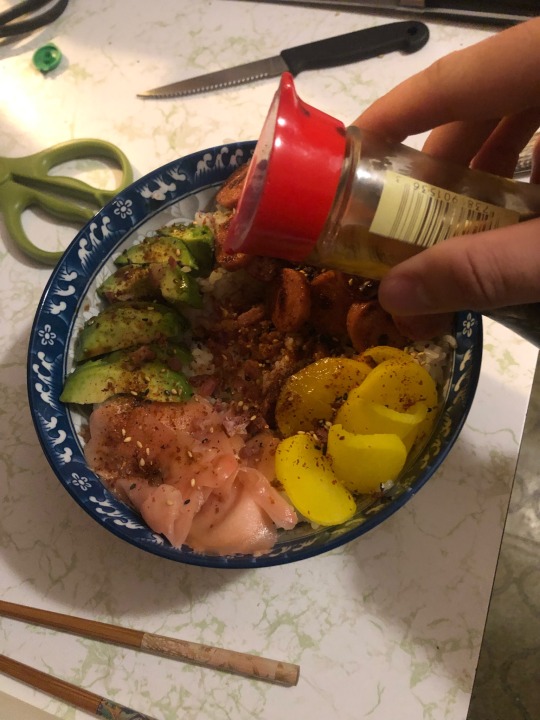
Despite being assigned one dish, we went ahead and added a drink to the California Camp Donburi. This drink is the Hawaiian Matcha Soda, a symbol of the focal point of Japanese-American immigration- Hawaiian sugar cane plantations. Hawaii was one of the first destinations for Issei, or first-generation Japanese-Americans. From there, some moved on to the mainland - specifically to California and other parts of the West Coast. In Hawaii, many Japanese-American immigrants worked on the sugarcane plantations (including Ryan’s own family). The pairing of the two dishes represents the contrast between Japanese-Americans in Hawaii and those that were on the mainland.

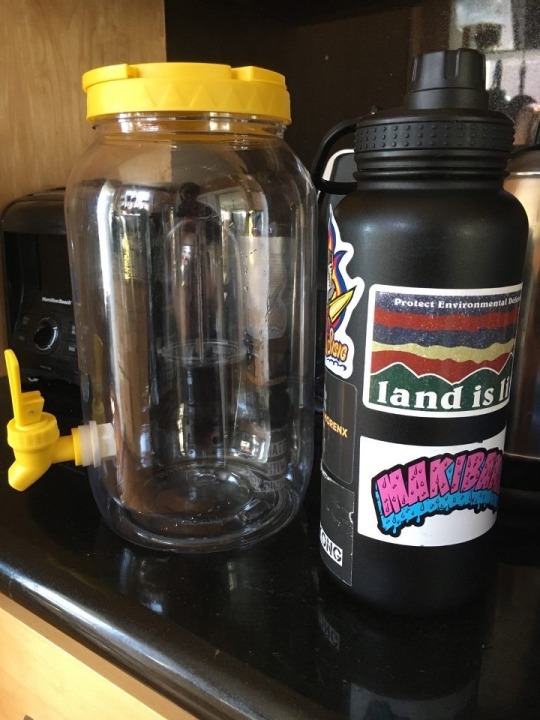
The symbolism behind the dish pairing pays large homage to the Japanese internment camps. The California Camp Donburi is representative of the Japanese-Americans on the mainland while the Hawaiian Matcha Soda represents those situated in Hawaii.
From this project, we learned much about Japanese immigration and Japanese-American history:
Push
The first and only major wave of Japanese immigration into the US occurred during the decline of the Meiji Era. As such, our dish and drink closely represents the long history of the Japanese-American community, which extends as far back as the 1860s.
-The caste system was dying, but the strict social hierarchy of the Edo period remained, albeit modified. A strong example is the Burakumin people, who are ostracized and are subject to racism, even to today.
-The myth of Japanese “pureness” existed, and many Okinawans (who were not considered “proper” Japanese) moved to Hawaii
-Beginning at about 1870, the Japanese industrial revolution began as the leaders of the Meiji Era attempted to catch up with the West. Thousands of Japanese students were sent to the US and Europe.
-Many people wanted to simply earn enough money to retire and return to Japan
Pull
-The aforementioned wave of Japanese immigration occurred before the regulation of the Gentlemen's Agreement (1907)
-There was a demand for cheap agricultural labor due to the Chinese Exclusion Act (1882), which Japanese, particularly Okinawan, people were able to fulfill
-Many Japanese immigrants had farming expertise, allowing them to excel in agricultural labor within the United States
-For Okinawans, Hawaii had a similar climate and lifestyle, but with more economic opportunities without a strong sense of social hierarchy and racism for being Okinawan
Gen and Mia’s Interview
During our quest for more information on the local struggle of Japanese-Americans, we were able to speak to a fourth generation Japanese-American woman named Yunis in San Francisco’s Japantown neighborhood. Our conversation with Yunis opened our hearts and minds to the struggles of a Japanese-American person in the Bay Area.
We found that her story lined up perfectly with the story we were aiming to portray with our dish and drink. Her great-great grandparents immigrated to Hawaii from Japan during the labor boom, working on sugarcane plantations. Along the way her family ended up in Berkeley, where she grew up. Speaking of her childhood she mentioned the trauma projected onto her by the older generations. The efforts by her parents to take the Japanese out of her in order to protect her from the racism and violence they were afraid to face. In this fear, her parents never taught Yunis the language, disconnecting her further from a culture her parents didn’t want her to remember.
Her favorite food growing up were things like Spam and Vienna Sausage as her family didn’t have much money. With her father serving in the Korean War, she mentioned that he was used to eating Spam and Vienna Sausage. When asked about our dish, she recommended our group create an okonomiyaki style dish, as the Japanese needed to find ways to utilize the tons of cabbage the United States was sending over after World War II. While we were already set on our dish and side, we realized that we needed to add cabbage. Had we not met Yunis, we wouldn’t have known the impact of cabbage on Japanese cuisine after WWII so we added the ingredient in order to represent her story and piece of the history she shared with us.
When speaking about modern day struggles, Yunis mentioned the sadness she felt when the COVID-19 stories broke. Seeing the racism, xenophobia, and discrimination directed towards Chinese poeple during this period showcased that not much has changed since her childhood. She wishes that the discrimination will stop. In order to see the mistakes we make today, we first must listen to and address the history of others. In order to hope for a brighter tomorrow, we must open our hearts to the stories and experiences of others. Yunis didn’t have a responsibility to speak to a group of college students working on a project but she did in order to share her own experience and teach us something about life, that we must address our traumas in order to avoid repeating them.
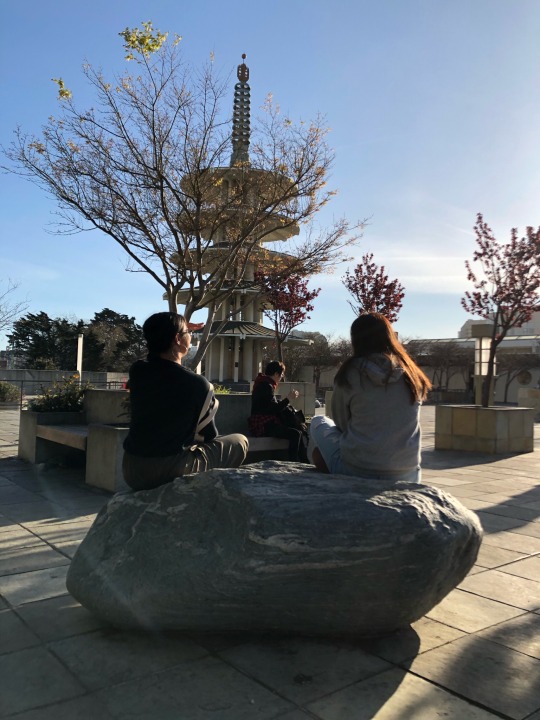
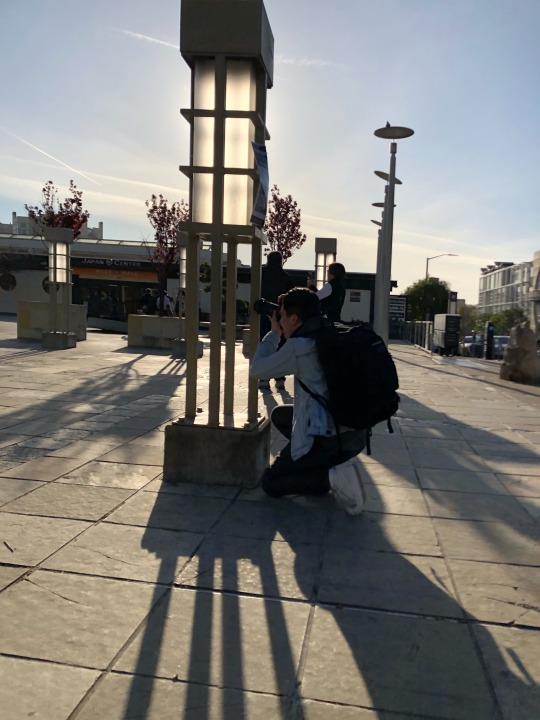
Thank you for taking the time to read through, and join us, on our journey in learning about the background of the Japanese-American people. While our dish may not do justice to their hardships, we’re proud to be part of the few that endeavored to understand it.
Here is our recipe:
Ingredients:
California Camp Donburi
White Rice
Hot dogs (spam is a great substitute!)
Bacon bits
Tsukemono AKA Pickled Vegetables (whatever you can get your hands on, times are tough)
Pickled Ginger
Sliced Avocado
Cabbage (use red for more color)
Furikake
Soy Sauce
Sriracha Sauce
Hawaiian Matcha Soda
1/2 cup cane sugar
1 cup Water (for simple syrup)
2 teaspoons matcha tea powder
1 can pineapple soda
Ice (optional)
Recipe:
California Camp Donburi
Step 1: Make the rice (do we even need to explain this?), put it into a bowl
Step 2: Take a hot dog, and slice it into tiny bite size pieces
Step 3: Heat the hot dog slices up on medium heat on a non-stick pan, char them if you’re into that
Step 4: While hot dogs are warming up, slice an avocado into visualizing appealing sized pieces
Step 5: Place the avocado on top of the rice bowl, only on one side
Step 6: Place hot dog slices on top of that rice bowl, on a different side, we want it to look pretty
Step 7: Place tsukemono and pickled ginger on a seperate side of the bowl
Step 8: Sprinkle with bacon bits and furikake
Step 9: Dash a little bit of soy sauce on it to taste, not too much
Step 10: Top with a sriracha sauce, to taste.
Hawaiian Matcha Soda
Step 1: Boil 1 cup of water for every 3/4 cup of cane sugar - this creates simple syrup
Step 2: Sift 2 teaspoons of matcha powder into simple syrup, be careful not to use too much, this drink can become very bitter (and strongly caffeinated) with too much matcha powder
Step 3: Let it cool overnight
Step 4: When you are ready to consume (and your California Camp Donburi is ready), combine the simple syrup matcha mix with 1 can pineapple soda
Step 5: This will create 2-4 servings, enjoy!
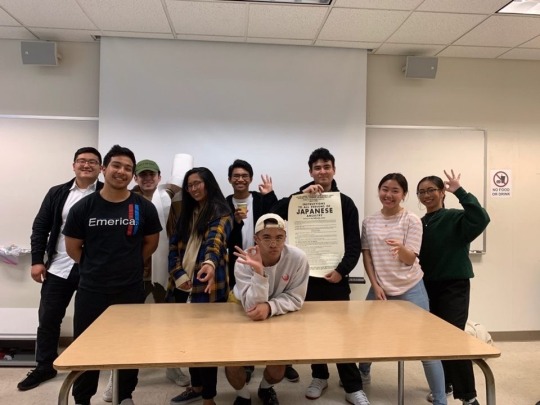
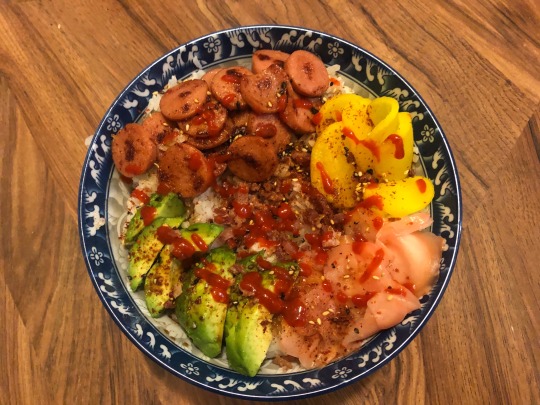
#AAS218JetherG#AAS218RyanS#AAS218BrianL#AAS218SeanS#AAS218SydM#AAS218PaulaT#AAS218GenevieD#AAS218MiaC#AAS218NateT
1 note
·
View note